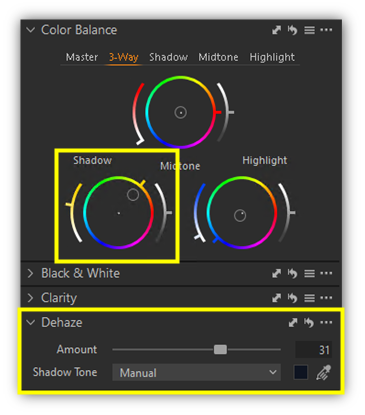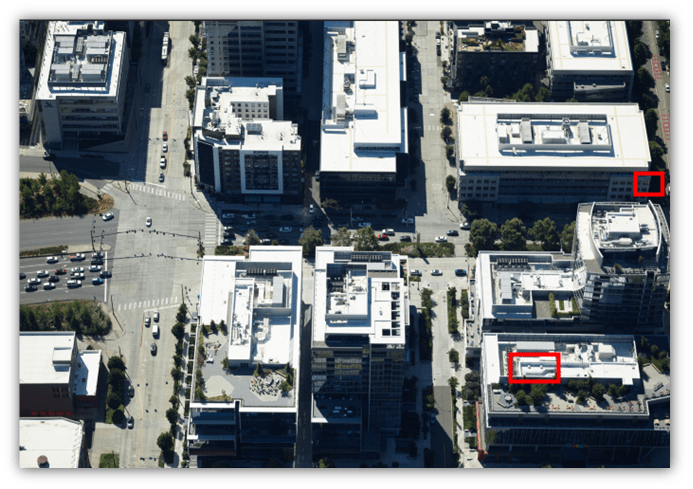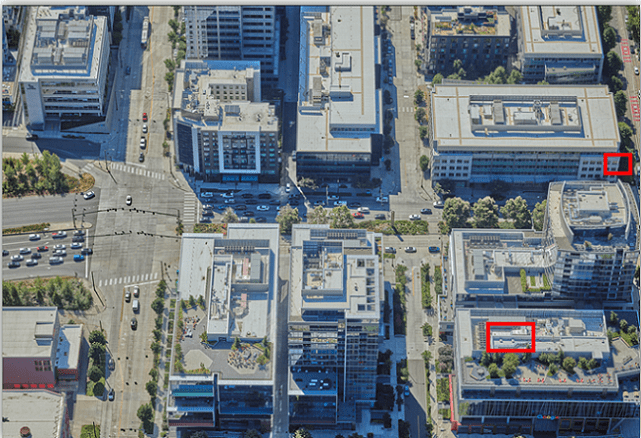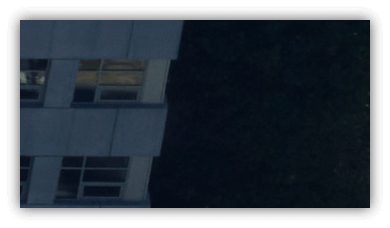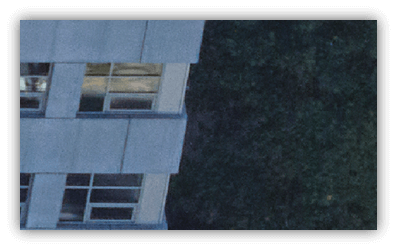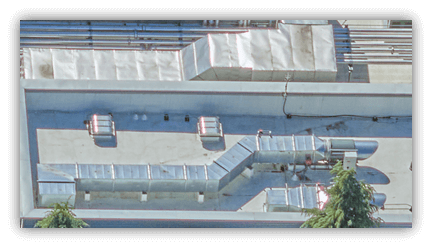Photo Pre-Processing Recommendations for Non-Optimal Illumination Conditions
When dealing with sub-optimal lighting or camera settings unsuited to the data's light level, it is advisable to pre-process the photos before importing them into PhotoMesh for final processing. This step is especially critical when converting high-bit depth data (such as 12-bit or 16-bit) to a lower bit depth format (like 8-bit TIFF or minimally compressed JPG).
Unprocessed photos often have a high-contrast histogram, accentuating brightness variations, as seen in brightly lit areas next to shadows or dark roads beside light sidewalks. While visually striking, these photos may not be suitable for detailed analysis or processing.
Pixel-based correlation, which requires high detail at the image's native resolution, becomes particularly challenging for photos captured in environments with extreme lighting conditions. In such settings, disparities in light and shadow are more pronounced, negatively impacting the accuracy of 3D modeling.
To address these issues, adjustments on the histogram's edges are recommended, particularly shadow and highlight corrections (see below), along with white balance adjustments to establish a neutral gray color scheme. A slight increase in saturation can also enhance non-gray elements, achieving a more even pixel value distribution.

|
Before |
After |
|
|
|
|
|
|
|
|
|
These adjustments effectively reduce the contrast between shadowed and brightly lit areas, resulting in a more balanced histogram. This balance is critical for two reasons: it improves 3D correlation by ensuring consistent feature detection across images, and it aids in smoother texture blending, thus enhancing the visual coherence of the 3D model.
Further refinements include dehaze and minor color balance adjustments in the shadows and highlights to compensate for Rayleigh Scattering. The extent of dehazing required depends on the visibility conditions during data collection. Adjustments to shadows and highlights should be tailored to match the light intensity and the contrast between illuminated and shaded areas.
